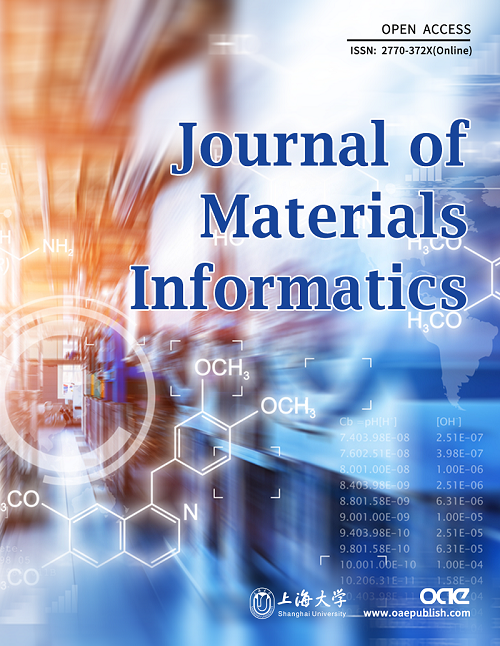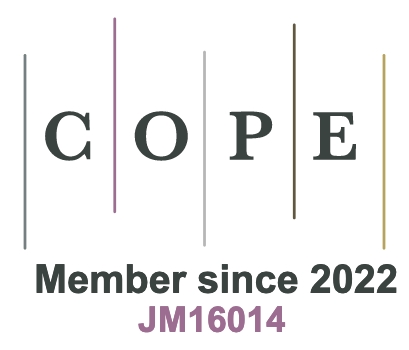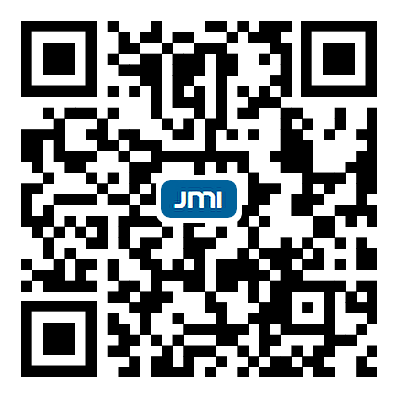REFERENCES
1. Schijve J. Fatigue of structures and materials. . Springer Science & Business; 2001. Available from: https://citations.springernature.com/book?doi=10.1007/978-1-4020-6808-9 [Last accessed on 8 Jul 2022]
2. Fatemi A, Yang L. Cumulative fatigue damage and life prediction theories: a survey of the state of the art for homogeneous materials. Int J Fatigue 1998;20:9-34.
3. Hectors K, De Waele W. Cumulative damage and life prediction models for high-cycle fatigue of metals: a review. Metals 2021;11:204.
4. Santecchia E, Hamouda AMS, Musharavati F, et al. A review on fatigue life prediction methods for metals. Adv Mater Sci Eng 2016;2016:1-26.
6. Chan KS. A microstructure-based fatigue-crack-initiation model. Metall Mat Trans A 2003;34:43-58.
7. Venkataraman G, Chung Y, Nakasone Y, Mura T. Free energy formulation of fatigue crack initiation along persistent slip bands: calculation of S N curves and crack depths. Acta Metall Mater 1990;38:31-40.
8. Wu X. On Tanaka-Mura’s fatigue crack nucleation model and validation. Fatigue Fract Eng Mater Struct 2018;41:894-9.
9. Basaran C. Introduction to unified mechanics theory with applications. Springer Nature 2021:115-202.
10. Lee HW, Basaran C. A review of damage, void evolution, and fatigue life prediction models. Metals 2021;11:609.
11. Lee HW, Basaran C. Predicting high cycle fatigue life with unified mechanics theory. Mech Mater 2022;164:104116.
12. Jamal M N, Kumar A, Lakshmana Rao C, Basaran C. Low cycle fatigue life prediction using unified mechanics theory in Ti-6Al-4V alloys. Entropy (Basel) 2019;22:24.
13. Egner W, Sulich P, Mroziński S, Egner H. Modelling thermo-mechanical cyclic behavior of P91 steel. Int J Plast 2020;135:102820.
14. Zhang H, Fu H, He X, et al. Dramatically enhanced combination of ultimate tensile strength and electric conductivity of alloys via machine learning screening. Acta Mater 2020;200:803-10.
15. Zou C, Li J, Wang WY, et al. Integrating data mining and machine learning to discover high-strength ductile titanium alloys. Acta Mater 2021;202:211-21.
16. Shen C, Wang C, Wei X, Li Y, van der Zwaag S, Xu W. Physical metallurgy-guided machine learning and artificial intelligent design of ultrahigh-strength stainless steel. Acta Mater 2019;179:201-14.
17. Wang C, Shen C, Huo X, Zhang C, Xu W. Design of comprehensive mechanical properties by machine learning and high-throughput optimization algorithm in RAFM steels. Nucl Eng Technol 2020;52:1008-12.
18. Shiraiwa T, Miyazawa Y, Enoki M. Prediction of fatigue strength in steels by linear regression and neural network. Mater Trans 2018;60:189-98.
19. Choi D. Data-driven materials modeling with XGBoost algorithm and statistical inference analysis for prediction of fatigue strength of steels. Int J Precis Eng Manuf 2019;20:129-38.
20. Keprate A, Ratnayake RC. Data mining for estimating fatigue strength based on composition and process parameters. International Conference on Offshore Mechanics and Arctic Engineering: American Society of Mechanical Engineers; 2019. pp. V004T003A017. Available from: https://asmedigitalcollection.asme.org/OMAE/proceedings-abstract/OMAE2019/V004T03A017/1067629 [Last accessed on 8 Jul 2022]
21. Gautham BP, Kumar R, Bothra S, Mohapatra G, Kulkarni N, Padmanabhan KA. More efficient ICME through materials informatics and process modeling. In: Allison J, Collins P, Spanos G, editors. Proceedings of the 1st World Congress on Integrated Computational Materials Engineering (ICME). Hoboken: John Wiley & Sons, Inc.; 2011. pp. 35-42.
22. Agrawal A, Deshpande PD, Cecen A, Basavarsu GP, Choudhary AN, Kalidindi SR. Exploration of data science techniques to predict fatigue strength of steel from composition and processing parameters. Integr Mater Manuf Innov 2014;3:90-108.
23. Agrawal A, Choudhary A. An online tool for predicting fatigue strength of steel alloys based on ensemble data mining Int J Fatigue 2018. pp. 389-400.
24. Shiraiwa T, Briffod F, Miyazawa Y, Enoki M. Fatigue performance prediction of structural materials by multi-scale modeling and machine learning. In: Mason P, Fisher CR, Glamm R, Manuel MV, Schmitz GJ, Singh AK, Strachan A, editors. Proceedings of the 4th World Congress on Integrated Computational Materials Engineering (ICME 2017). Cham: Springer International Publishing; 2017. pp. 317-26.
25. Rovinelli A, Sangid MD, Proudhon H, Ludwig W. Using machine learning and a data-driven approach to identify the small fatigue crack driving force in polycrystalline materials. npj Comput Mater 2018:4.
26. Zhang M, Sun C, Zhang X, et al. High cycle fatigue life prediction of laser additive manufactured stainless steel: a machine learning approach. Int J Fatigue 2019;128:105194.
27. Zhan Z, Li H. Machine learning based fatigue life prediction with effects of additive manufacturing process parameters for printed SS 316L. Int J Fatigue 2021;142:105941.
28. Zhang X, Gong J, Xuan F. A deep learning based life prediction method for components under creep, fatigue and creep-fatigue conditions. Int J Fatigue 2021;148:106236.
29. Kalayci CB, Karagoz S, Karakas Ö. Soft computing methods for fatigue life estimation: a review of the current state and future trends. Fatigue Fract Eng Mater Struct 2020;43:2763-85.
30. Yang J, Kang G, Liu Y, Kan Q. A novel method of multiaxial fatigue life prediction based on deep learning. Int J Fatigue 2021;151:106356.
31. Maleki E, Unal O, Seyedi Sahebari SM, Reza Kashyzadeh K, Danilov I. Application of deep neural network to predict the high-cycle fatigue life of AISI 1045 Steel coated by industrial coatings. JMSE 2022;10:128.
32. Maleki E, Unal O, Guagliano M, Bagherifard S. Analysing the fatigue behaviour and residual stress relaxation of gradient nano-structured 316L steel subjected to the shot peening via deep learning approach. Met Mater Int 2022;28:112-31.
33. Kim D, Lim JH, Lee S. Prediction and validation of the transverse mechanical behavior of unidirectional composites considering interfacial debonding through convolutional neural networks. Composites Part B: Engineering 2021;225:109314.
34. Yang C, Kim Y, Ryu S, Gu GX. Prediction of composite microstructure stress-strain curves using convolutional neural networks. Mater Des 2020;189:108509.
35. Tu Y, Liu Z, Carneiro L, et al. Towards an instant structure-property prediction quality control tool for additive manufactured steel using a crystal plasticity trained deep learning surrogate. Mater Des 2022;213:110345.
37. Paul A, Jha D, Al-Bahrani R, et al. Transfer learning using ensemble neural networks for organic solar cell screening. In: 2019 International Joint Conference on Neural Networks (IJCNN): IEEE; 2019. pp. 1–8. Available from: https://ieeexplore.ieee.org/abstract/document/8852446 [Last accessed on 8 Jul 2022]
38. Yamada H, Liu C, Wu S, et al. Predicting materials properties with little data using shotgun transfer learning. ACS Cent Sci 2019;5:1717-30.
39. Kailkhura B, Gallagher B, Kim S, Hiszpanski A, Han TY. Reliable and explainable machine-learning methods for accelerated material discovery. npj Comput Mater 2019:5.
40. Jha D, Choudhary K, Tavazza F, et al. Enhancing materials property prediction by leveraging computational and experimental data using deep transfer learning. Nat Commun 2019;10:5316.
41. NIMS. Fatigue data sheet. Available from: https://smds.nims.go.jp/fatigue/ [Last accessed on 8 Jul 2022].
42. Sakai T, Sugeta A. Publication of the second edition of “Standard evaluation method of fatigue reliability for metallic materials” [Standard regression method of S-N curves]. J Soc Mat Sci 2005;54:37-43.
43. Jain A, Nandakumar K, Ross A. Score normalization in multimodal biometric systems. Pattern Recognition 2005;38:2270-85.
44. Maleki E. Artificial neural networks application for modeling of friction stir welding effects on mechanical properties of 7075-T6 aluminum alloy. IOP Conf Ser: Mater Sci Eng 2015;103:012034.








